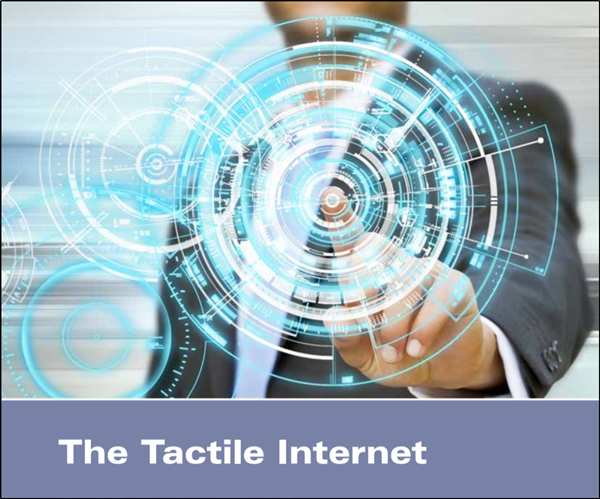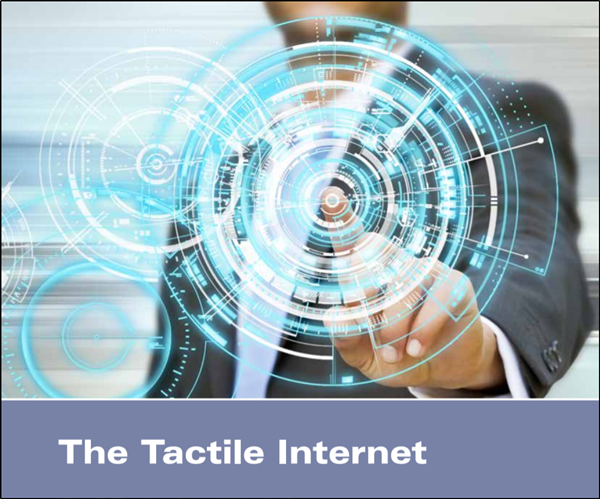The IoT era opened new avenues for automation with a wide array of Internet-enabled gadgets. Tactile Internet plans to take it even further. The new technology will find its application in various fields like,
Before we proceed further, let’s try to understand what exactly Tactile Internet is and how does it work?
What is Tactile Internet
The International Telecommunication Union (ITU) defines the Tactile Internet as Internet network that combines ultra-low latency with extremely high availability, reliability, and security. Yes, the key feature that distinguishes the Tactile Internet is its increased availability of reliable high-speed connections via mobile and broadband Internet, with extremely low round-trip latency times. It also enables haptic interaction with visual feedback, with technical systems supporting audiovisual interaction with an imperceptible time-lag It is this instantaneous reaction of the Tactile Internet that enhances the communication and leads to more realistic, immersive social interaction in private and business environments. Let’s now see its areas of application.
1] AUTOMATION
Automation in the industry is a key, steadily growing application field for the Tactile Internet. Automation not only increases the overall production of an organization but efficiency too. The sensitivity of control circuits when controlling devices moving rapidly (such as industrial robots) requires an end-to-end latency significantly below 1 millisecond per sensor. High-speed connectivity of 5G will make this possible and so its an area worth exploring for Tactile Internet.
2] EDUCATION
The Tactile Internet will enable substantially improved learning experiences based on the haptic overlay of the teacher and learner. Applications such as Virtual Reality (VR) and Augmented Reality (AR) will improve education and understanding-based learning. Example, by combining Tactile Internet with VR and AR, the learning experience will go far beyond contemporary learning methods and give students an opportunity to learn mostly through exploration and discovery. Also, there will be minimal intervention from teachers and no additional coaching pressure.
3] SERIOUS GAMING
Serious Games are games designed for a purpose other than entertainment. For instance, they combine fun with problem-solving challenges and goal-oriented activities. As such, serious Games hold relevance to several application fields important to our society; among them education, training, simulation, and health. What limits the development of it is an end-to-end delay of communications systems, as the perceptible delays directly influence the perceived realism of applications. Tactile Internet as Internet network that combines ultra-low latency with extremely high availability, reliability, and security, the task could be made possible.
4] HEALTHCARE
Currently, medical expertise in most regions today is bound to the location of the physician. To seek advice from a doctor, you have to be physically present at his clinic or a hospital. This will change with the development of Tactile Internet as potential applications of Tactile Internet in healthcare will include Tele-diagnosis, tele-surgery and tele-rehabilitation. Using these services remote physical examination of an individual will be possible as the physician will be able to command the motion of a tele-robot at the patient’s location and receive not only audio-visual information but also critical haptic feedback. The same technical principle of tele-operation will make tele-surgical interventions possible, relieving the patient of costly travel to the surgeon. Also, future tele-rehabilitation techniques will benefit from the progression of tele-robotic technologies as it will enable a robotic device – commanded by the therapist to steer and correct the motions of the patient. According to a research, rehabilitation into the patient’s home has a higher therapy success rates as well as improved cost-efficiency. It is essential to see that as the power of machines increases, the Tactile Internet should help complement humans rather than substitute for them. It should provide opportunities that empower them by providing a growth path based on increased output rather than reduced inputs due to automation. If successful, most of the current developments of the Internet will be dwarfed by the emergence of the Tactile Internet as it will be able to deliver real-time control and physical tactile experiences remotely. Source – ITU-T Technology Watch.

